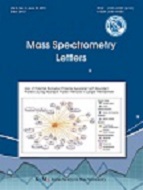
- P-ISSN 2233-4203
- E-ISSN 2093-8950

As a part of efforts to establish the positive list system (PLS) in South Korea, a method to determine residual ema- mectin benzoate (EB) in various aquatic products using QuEChERS-EDTA and LC-MRM was developed. The developed method was validated in the aspects of specificity, linearity (correlation coefficient of at least 0.996), sensitivity (the limit of detection and the lower limit of quantitation ≤ 5 ng/g), recovery (the recovery range of 87.4 and 96.2), and precision (the relative standard deviation of recovery between 0.9 and 13.5). Additionally, the validated method was successfully applied for monitor- ing EB contamination in eel, halibut, and shrimp collected from local food markets. To our knowledge, the present method is the first one to determine residual EB in various aquatic products at the level satisfying the PLS and could contribute to the estab- lishment of the PLS in South Korea.
Cornejo, I.. (2014). . PLoS Pathog, 10, e1004402-.
Ishaaya, I.. (2002). . Pest Manag. Sci, 58, 1091-.
Gustafson, L.. (2006). . J. Fish Dis, 29, 621-.
-Kang, H.. (2004). . J. Agric. Food Chem, 52, 2108-.
Kinsella, B.. (2009). . Anal. Chim. Acta, 637, 196-.
Aguilera-Luíz, M. M.. (2008). . J. Chromatogr. A, 1205, 10-.
Liu, X.. (2014). . Chromatographia, 77, 31-.
Martínez-Dominguez, G.. (2015). . Food Chem, 177, 182-.
Hernando, M. D.. (2007). . J. Chromatogr. A, 1155, 62-.
Lopes, R. P.. (2012). . J. Chromatogr. B, 895, 39-.
European Parliament.. Regulation (EC) No 396/2005 of the european paliament and of the council.
Department of Food Safety, Ministry of Health, Labour and Welfare, Japan. (2006). Introduction of the Positive List System for Agricultural Chemical Residues in Foods. .
European Committee for Standardization. EN 15662:Foods of plant origin - Determination of pesticide residues using GC-MS and/or LC-MS/MS following acetonitrile extraction/partitioning and clean-up by dispersive SPE-QuEChERS-method.
Cho, H. R.. (2015). . Anal. Bioanal. Chem, 407, 9043-.
Ministry of food and drug safety, South Korea. Food and nutrient data system. https://www.foodsafetykorea.go.kr/portal/healthyfoodlife/foodnutrient/simpleSearch.do?menu_grp=MENU_NEW03&menu_no=2805.
Lazartigues, A.. (2011). . Anal. Bioanal. Chem, 400, 2185-.
Codex Committee on Pesticide Residues. Guidelines on good laboratory practice in pesticide residue analysis CAC/GL 40–1993.